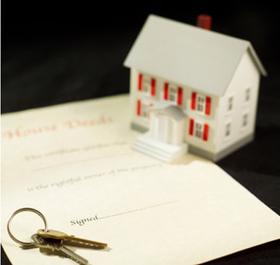When it's time to sell your home, I start by preparing a seller's "net sheet," which outlines the sale price less your outstanding mortgage, pro-rated property taxes, etc. Often people are worried about how much tax they're going to have to pay on that big (hopefully) number on the bottom line that says "Net to Seller."
Most times the answer is ZERO taxes! When you sell your principal residence and make a profit, you get to exclude $250,000 of that profit from your taxable income. And that's just the exclusion for single owners. Married couples can exclude up to $500,000 (if both spouses each meet the ownership and use tests below). So, depending on how much of a profit you make on the sale, you and your partner could potentially have no capital gains tax bill at all.
Here's the fine print: in order to claim the maximum exclusion, you have to pass the IRS ownership and use tests. The test questions are:
- Have you owned the house for two years?
- Have you lived in the house as your principal residence for two out of the last five years, ending on the date of the sale?
There are a few exceptions to these rules–for example, if you had to move before owning the home for two years because of a job change or due to "unforeseen circumstance," such as a divorce or natural disaster. In these situations the IRS may allow you to prorate the exclusion.
And here's more fine print that is ususally helpful: the two years residency doesn't have to be consecutive–you just have to have lived in your home for a total of 24 months out of the five years prior to the sale.
How to Calculate your cost basis
To determine capital gains on the sale of your home, you subtract your 'cost basis' from the selling price. Your cost basis is not just the purchase price. It also includes some settlement fees, closing costs and commissions paid with the purchase and the sale. Add to this the cost of significant capital improvements (not repairs) you've made for renovations, additions, roofing, landscaping, and other upgrades. All of these improvements increase your cost basis, and will lower your potential tax liability. (Another good reason to keep records of all your home improvements)
You can also reduce your tax basis (and owe more taxes) for a few reasons – if you have a home office and have claimed depreciation over time, you now have to subtract those deductions from your cost basis. Or any tax credits for energy-related improvements have to be subtracted as well.
Estimate sale price and capital gains
Now estimate your sale price and subtract your cost basis. If you bought your house for $350,000, did $50,000 worth of improvements and had other closing fees and costs of $15,000, your cost basis is $415,000. Now let's say you expect to sell the house for $850,000. Your potential capital gain would be $435,000.
Factor in exclusion
In the above example, if you and your married partner met the ownership and use tests, you could exclude the entire gain from your taxable income. You wouldn't even have to report the sale on your tax return. However,if your capital gain turned out to be $525,000, you'd have to report the sale and pay long-term capital gains on $25,000.
As always, I recommend you speak with your accountant for the rules that apply to your personal tax situation. But if you want to talk about selling your home, please call.
Click here for the full article.
-
Cary Perkins,Windermere Top ProducerFun With Real EstateCurrent Portland Oregon Real Estate Information,Highlights of Portland Oregon, House IdeasPortland Oregon Homes
Portland Real Estate, Portland Oregon Top Producer, Windermere Top Producer, Portland Realtor, Portland Homes for Sale
Windermere Top Producer Cary Perkin
 Facebook
Facebook
 X
X
 Pinterest
Pinterest
 Copy Link
Copy Link
